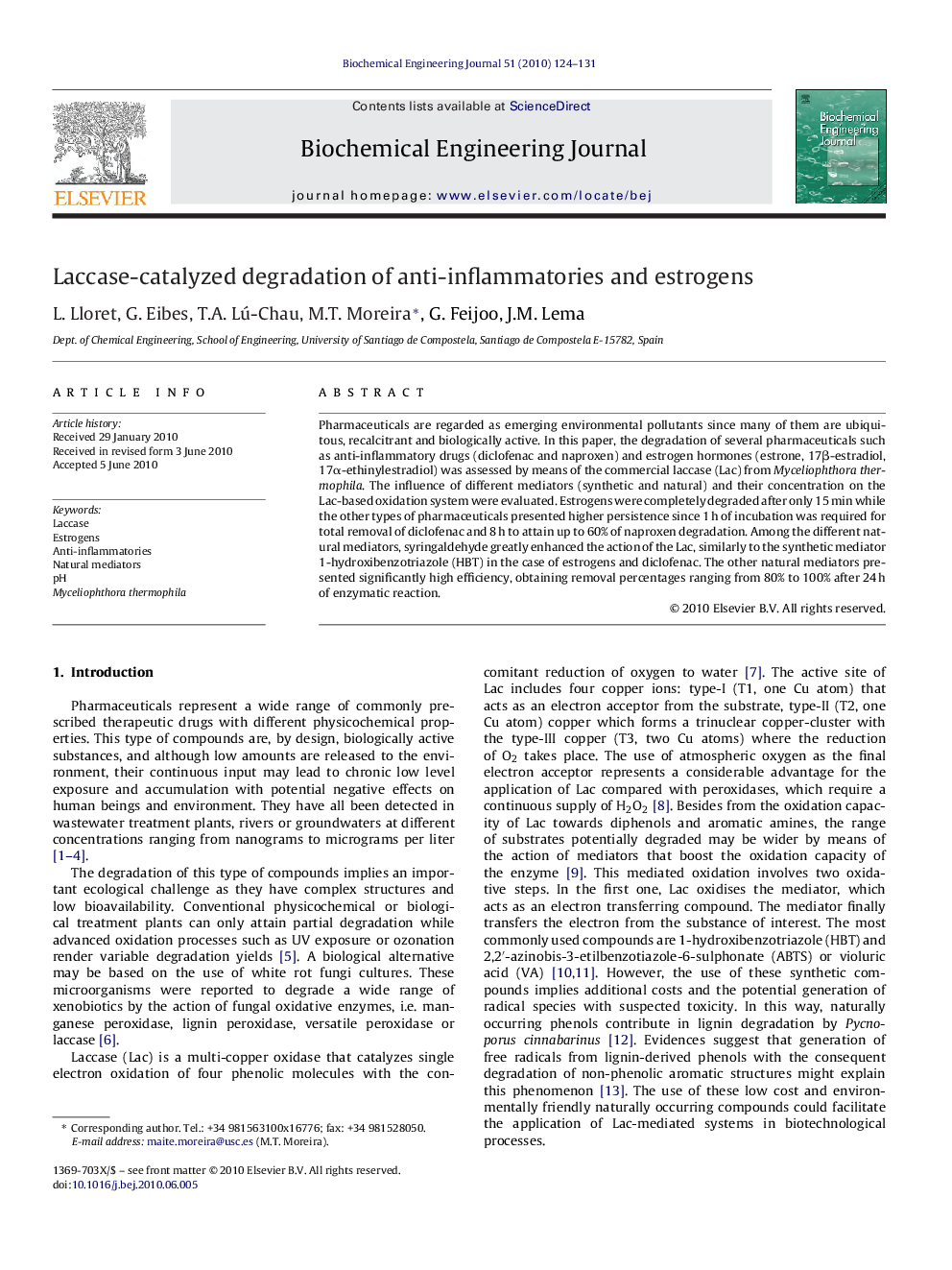| Article ID | Journal | Published Year | Pages | File Type |
|---|---|---|---|---|
| 3911 | Biochemical Engineering Journal | 2010 | 8 Pages |
Pharmaceuticals are regarded as emerging environmental pollutants since many of them are ubiquitous, recalcitrant and biologically active. In this paper, the degradation of several pharmaceuticals such as anti-inflammatory drugs (diclofenac and naproxen) and estrogen hormones (estrone, 17β-estradiol, 17α-ethinylestradiol) was assessed by means of the commercial laccase (Lac) from Myceliophthora thermophila. The influence of different mediators (synthetic and natural) and their concentration on the Lac-based oxidation system were evaluated. Estrogens were completely degraded after only 15 min while the other types of pharmaceuticals presented higher persistence since 1 h of incubation was required for total removal of diclofenac and 8 h to attain up to 60% of naproxen degradation. Among the different natural mediators, syringaldehyde greatly enhanced the action of the Lac, similarly to the synthetic mediator 1-hydroxibenzotriazole (HBT) in the case of estrogens and diclofenac. The other natural mediators presented significantly high efficiency, obtaining removal percentages ranging from 80% to 100% after 24 h of enzymatic reaction.
